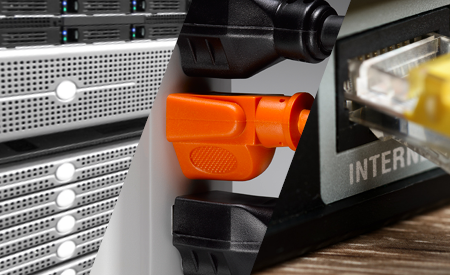6 Ways to Take Your MTDC Beyond Ping-Power-Pipe
Ping-power-pipe: That phrase has been used for a long time to describe multi-tenant data centers (MTDCs). As an abbreviated way to describe what they offer - rack or floor space (customers "ping" computers remotely), electrical "power" and an Internet connection ("pipe") - these three characteristics are often used to compare and evaluate multi-tenant data center performance.

But as MTDC demand from enterprises and cloud providers continues to grow, it's no longer about what your MTDC offers in terms of space, power and bandwidth. Your customers want to know what else you provide beyond ping-power-pipe. There are several types of valuable services and creative options you can consider to help avoid competing strictly on price.
Factors such as sustainability, quality customer service and flexibility are becoming more important as enterprises weigh the costs and benefits of moving to an MTDC.
Here are six suggestions to consider as you think about moving your MTDC beyond the ping-power-pipe mentality so you can offer more to customers and create attractive service-level agreements (SLAs).
1. Centralize Customer Service and Management
Edge data centers move hardware from the core network in a central data center out to smaller data centers. These smaller data centers relay data to end-users. This geographically distributed platform allows data to move much faster instead of sending it back to the cloud for processing and can improve client service by reducing load times, shrinking traffic and reducing bandwidth requirements; however, MTDC clients are sometimes disappointed if customer service and management are as spread out as edge data centers may be. As a result, some multi-tenant data centers have seen success in centralizing customer support and management; with one number to call for anything they need, this may save clients time and frustration, and help them solve problems faster.
2. Consider Different Power-Purchasing Options
Although it’s still considered part of a ping-power-pipe offering, finding a way to reduce costs per kilowatt-hour can help set you apart – especially if you’re located in an area where electricity prices are on the rise.
Some multi-tenant data centers are able to reduce costs for tenants without having to reduce their energy usage. Consider investigating utility options if your multi-tenant data center is in a deregulated state. Depending on your location, there may be several options available in terms of where and how you buy power. (And these options can vary from time to time, so regularly checking in to see what has changed can be helpful.) In some cases, some MTDCs choose to purchase energy in small amounts in real time based upon cost; this takes advantage of better pricing when energy prices drop.
3. Futurproof Your Infrastructure
Investing in a high-quality, modular infrastructure made up of high-performance copper, fiber and wireless solutions will ensure that you can support whatever your clients need.
For example, Category 6A cabling can support transmission rates of up to 500 MHz), and eliminates the chance of alien crosstalk interference at those higher frequencies. Its support of 10GBASE-T (the standard technology that enables 10G Ethernet operations over balanced twisted-pair copper cable) to 100 m ensures that it can support the fastest Ethernet available to full channel length. Category 6A cabling also offers enhanced thermal dissipation performance, which is crucial when incorporating Power over Ethernet (PoE) technology.
Growing power requirements of network devices are pushing the need for higher power levels delivered through the network. In fact, a new PoE standard, IEEE 802.3bt, supports up to 100W of power per cable, supporting devices such as laptops and TVs. But higher power levels running through the cable can make the cable hotter, causing performance issues. As a result, insertion loss may increase. Category 6A cabling offers low DC resistance and high operating temperature ratings to help MTDCs reduce the potential trouble with higher temperatures levels experienced with PoE.
4. Consider Containment Solutions and Thermodynamics
The latest AFCOM State of the Data Center report indicates that 70% of survey respondents have experienced increases in rack power density in the last three years. As these numbers continue to rise, some MTDCs are focusing on better airflow management through containment. These solutions can improve cooling and power infrastructure efficiency to reduce costs. Hot- or cold-aisle containment between cabinet rows separate hot and cold air, eliminating cold air bypass and the mixing of hot and cold air.
New software offerings make use of 2D and 3D renderings to conduct CFD analysis for predictive modeling, what-if and capacity planning in MTDCs. This type of software also provides information on the current state of your data center's thermal efficiencies, as well as predictions about its potential future state. To save you time and money, this solution helps you consider the thermal impact of changes to your MTDC when equipment needs to be moved or put in place.
5. Promote Your Differentiators
What are you able to offer beyond ping-power-pipe? Consider communicating the differences you offer that help set you apart from other MTDCs.
As cloud use continues to grow, customers are becoming comfortable with the idea of having IT resources available on demand and paying only for what they use. If your MTDC is able to offer clients a similar option for their space and connectivity needs, this may help give you an edge.
What measures are you implementing to prevent downtime? Think about explaining to clients (both new and potential) how you regularly test every system, how you're prepared to deal with worst-case scenarios and the types of practice drills you run to ensure readiness.
How is your facility built to protect against natural disasters? Potential customers will be excited to hear what you've done to make sure emergencies won't negatively impact their businesses, whether it's a hardened concrete exterior or multiple redundant underground utility feeds.
Have you made steps toward improving energy efficiency and shrinking your carbon footprint? Those improvements are great stories to consider sharing - and some customers may even use that information as a determining factor instead of looking solely at your ping-power-pipe offerings.
6. Leverage Your Partners
For many customers, ping-power-pipe are simply not enough. They are looking for "velvet-hand" or "white-glove" treatment from a true MTDC partner that can help ensure their success.
Today, many savvy enterprise owners look for - and understand the value of partnerships. These potential clients may assess your capabilities based upon how you can support them through the strong relationships you already have in place with vendors and suppliers. This can help you leverage your successful vendor/supplier relationships and turn these connections into a value-add for clients that want to partner with you.
Belden has several solutions available for MTDCs that hope to create more attractive SLAs. We can help you offer additional value, meet customers’ ever-increasing expectations and deploy equipment faster. Learn more here.
